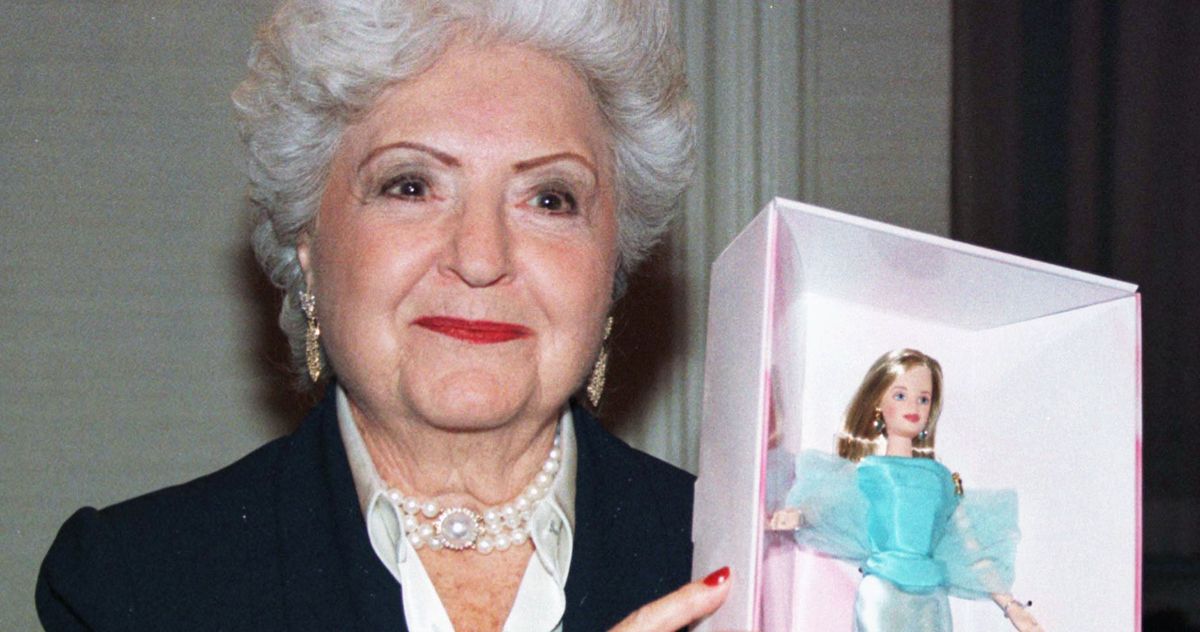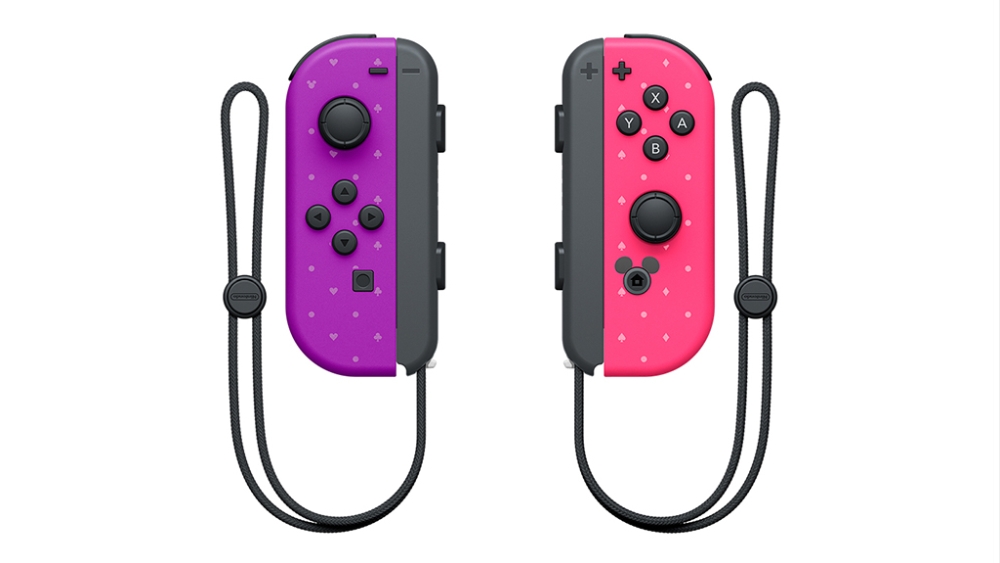
Who Was the Real Ruth Handler From Barbie?
If you’ve just gotten back from seeing Greta Gerwig’s Barbie-approved Barbie, chances are you might have some questions. For example, can you buy the “I Am Kenough” hoodie? (Yes.) Are you the only one who thought Allan was iconic? (No.) And hey, who was that old woman slash ghost who created Barbie? Ruth Handler, played by Cheers star Rhea Perlman, is the real inventor of Mattel’s most famous doll and thus the first person to ever say, “Hi, Barbie!” “My whole philosophy of Barbie was that through the doll, the little girl could be anything she wanted to be,” she wrote in her 1994 memoir Dream Doll. “Barbie always represented the fact that a woman has choices.”
Born Ruth Mosko in 1916, she married her high-school boyfriend, Elliot Handler, in 1938. The partners in marriage also became business partners, making and selling items like bowls and clocks from their garage in California. In 1945, the couple co-founded a toy company with industrial designer Harold Mattson. Although Ruth was not represented in the Mattel name (a combination of Mattson’s “Matt” + Elliot’s “El”), she served as the company’s first president. Per the New York Times, she was largely responsible for Mattel’s 1955 decision to spend $500,000 — nearly its entire net worth at the time — on Mickey Mouse Club ads, a marketing gamble that pushed the company to nationwide success. In Barbie, Ruth’s ghost tells Barbie that she made Barbie for her daughter, had a double mastectomy, and ran into tax issues with the IRS. How does the movie monologue compare with Handler’s real life? Find the (t)ruth below.
Why did Ruth Handler create Barbie?
Growing up, her daughter, Barbara, played with paper dolls with her friends. Ruth was fascinated by the way that they imagined the dolls as their older selves. “Every little girl needed a doll through which to project herself into her dream of her future,” she later told the New York Times. “If she was going to do role playing of what she would be like when she was 16 or 17, it was a little stupid to play with a doll that had a flat chest. So I gave it beautiful breasts.” In a market of baby dolls, however, Mattel wasn’t initially interested in making a grown-up alternative. Ruth said in a BBC interview that she actually gave up on the idea until 1956, when she saw a voluptuous German doll named Lilli while on vacation in Europe. She returned home to finally create Barbie Teen-Age Fashion Model. Named after Barbara, the doll debuted in a black-and-white swimsuit at the 1959 American Toy Fair in New York City. According to Ruth, male buyers thought that wives wouldn’t get their daughters a doll with such a grown-up body (read: breasts and a skinny waist). But just like “girl dinner,” women ate her up. Per the Los Angeles Times, Barbie ended up recording more than 350,000 first-year sales. By the early 1960s, Barbie was reportedly responsible for most of Mattel’s sales profits. She was supplemented with many accessories, including her boy-toy boyfriend, Ken, named after the other Handler child, Kenneth. Barbie’s résumé (and closet) eventually expanded to encompass pretty much every career.
Did Ruth Handler actually get accused of tax fraud?
Yes. But if it makes her ghost feel any better, that means she has something in common with with Shakira? Ruth allegedly girlbossed too close to the sun in the 1970s, when reports surfaced that Mattel higher-ups had lied on financial reports to make it seem like earnings were strong when the company was actually losing millions of dollars. She ended up resigning as president in 1973. According to Biography.com, she and her husband both fully cut ties with the company they co-founded by 1975. Still, she couldn’t evade a tax-evasion investigation: In 1978, a grand jury indicted Ruth and several other former Mattel execs on charges of conspiracy, fraud, and false reporting to the Securities and Exchange Commission. According to the New York Times, they were accused of falsifying business records to influence the market price of Mattel stock to their own benefit. Ruth pleaded no contest, was fined $57,000, and received a community service sentence of 2,500 hours.
Per the Los Angeles Times, Ruth later suggested that her Mattel downfall was precipitated by health issues, explaining that illness caused her to be “unfocused” about a corporate reorganization at the company. Ruth was diagnosed with breast cancer in 1970 and had a mastectomy that same year. When she returned from a leave of absence, she said, people looked at her differently but would not talk about why she had been gone. “I was never able to get back in and grab hold of things as I should have,” she reportedly told USA Today in 1994.
Still, her breakup with Mattel didn’t stop her from getting down to business elsewhere. As the founder of Ruthton Corporation, she made and marketed silicone breasts to fellow mastectomy patients, including former First Lady Betty Ford. While Barbie suggests that Ruth had a double mastectomy, only her left breast was actually removed. How do we know? According to the New York Times, she used that fact as a marketing technique, often popping her blouse open during interviews and asking the press to feel her chest to see if they could tell which side was fake. The Los Angeles Times reported that Ruth sometimes acknowledged her inventions of both busty Barbies and prosthetic boobs by quipping, “I’ve lived my life from breast to breast.”
Is Ruth Handler still alive?
No. She died at age 85 on April 27, 2002, at a hospital in Los Angeles. Handler’s husband told the Los Angeles Times that the cause was complications following a colon surgery she had undergone three months before. Now, did the Barbie creator go on to become a ghost with an office on the 17th floor of Mattel’s headquarters? That we Ken not confirm or deny.
Related
- We Shouldn’t Have to Grade Barbie on a Curve
- Barbie’s Ending Is When It Finally Transcends Corporate IP
- Let Us Salute the Unsung Hero of Barbie
- How Are Movie Theaters Handling Barbenheimer?









![[VIDEO] Gelagat Che Ta Tunggu Aaisyah Bersiap Cetus Perhatian Ramai!-“Tengok Penampilan, Tercampaklah Mak Hang!” [VIDEO] Gelagat Che Ta Tunggu Aaisyah Bersiap Cetus Perhatian Ramai!-“Tengok Penampilan, Tercampaklah Mak Hang!”](https://i0.wp.com/murai.my/wp-content/uploads/2024/04/25DCA8CF-C629-4DCA-8597-2CA8819D9297.jpg?resize=150%2C150&ssl=1)














![[VIDEO] Reaksi Tunku Azizah Sambut Birthday Anakanda Tengku Puteri Jihan, Raih Perhatian Ramai! [VIDEO] Reaksi Tunku Azizah Sambut Birthday Anakanda Tengku Puteri Jihan, Raih Perhatian Ramai!](https://i0.wp.com/murai.my/wp-content/uploads/2024/04/Untitled-design-27.jpg?fit=300%2C300&ssl=1)










![[VIDEO] Nadhir Nasar Sambut Birthday Tengku Ameera Cetus Perhatian Ramai”- Nak Kena Bersaing Dengan Kerabat Pulak, Hmm” [VIDEO] Nadhir Nasar Sambut Birthday Tengku Ameera Cetus Perhatian Ramai”- Nak Kena Bersaing Dengan Kerabat Pulak, Hmm”](https://i0.wp.com/murai.my/wp-content/uploads/2024/04/D3415DF6-2464-4794-880F-841EB898C969.jpg?w=768&ssl=1)































